A garden based on flowers may be beautiful for short periods of time, but it is the foliage that holds a garden design together by spanning the seasons. Trees, shrubs and perennials all play an important role in forming the picture frames that enhance ephemeral flowers.
With so many beautiful new introductions to choose from, you’ll be sure to find some that are just what you need. These are some of my personal favorites, most of which I have tested in my own garden and containers.
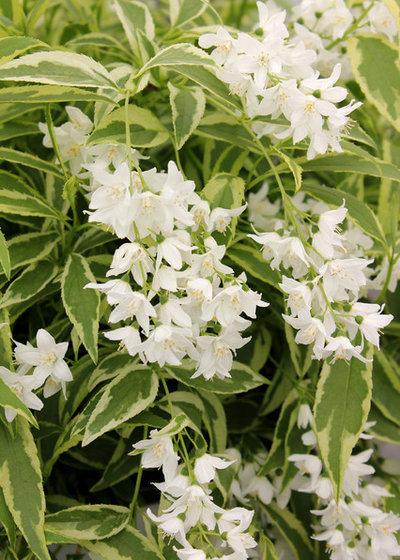 Creme Fraiche Deutzia
Creme Fraiche Deutzia(
Deutzia graciis ‘Creme Fraiche’)
Crisp green and white variegation makes this deciduous shrub the perfect addition to break up expanses of green. Clusters of white flowers in springtime are a bonus, and at just 2 feet tall and wide, this shrub will fit into the smallest of spaces.
Where it will grow: Hardy to -20 degrees Fahrenheit (USDA zones 5 to 8; find your zone)
Water requirement: Average
Light requirement: Full sun
Mature size: 1 foot to 2 feet tall and wide
Benefits and tolerances: Deer resistant
Seasonal interest: Spring to fall
When to plant: Spring or fall
Distinguishing traits:- Variegated foliage
- White flowers in spring
Planting notes: - Plant in groups for sparkle in the landscape or as a filler in large containers.
- It does best in moisture-retentive, well-drained soil.
- Prune immediately after it blooms to shape.
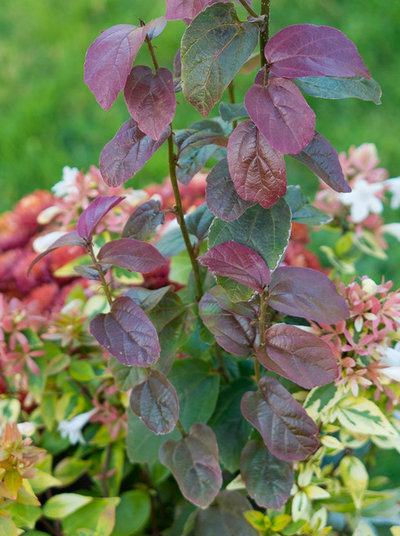
Le jardinet
Persian Spire Persian Ironwood(
Parrotia persica ‘Persian Spire’)
If you are looking for a beautiful tree for a narrow space, Persian Spire may be the answer. Unlike earlier varieties, this one stays reliably columnar even as it matures.
It offers so much more than a narrow footprint: spidery red flowers in late winter and outstanding foliage that emerges with a purple glow before transitioning to an attractive green with purple margins. It is at its most colorful, however, in fall, when it displays shades of purple, orange and red for many weeks.
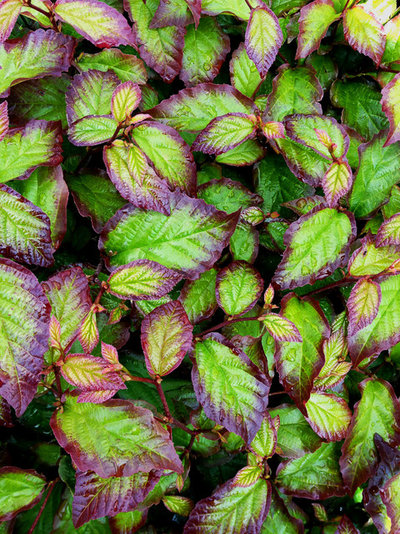
UpShoot LLC
Where it will grow: Hardy to -20 degrees Fahrenheit (zones 5 to 8)
Water requirement: Average, but drought tolerant once established
Light requirement: Full sun or partial shade
Mature size: 25 feet tall and 10 feet wide
Benefits and tolerances: Low maintenance
Seasonal interest: Year-round
When to plant: Spring or fall
Distinguishing traits:- Exceptional foliage
- Columnar growth
- Unusual flowers
Planting notes: - Enjoy young plants in containers and transplant them to the garden when they get a little larger.
- Persian Spire is perfect for narrow gardens or as a vertical punctuation point in larger spaces.
- Plant it in moisture-retentive, well-drained soil.
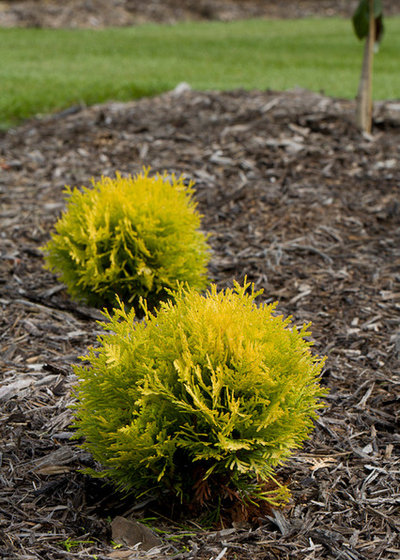 Anna’s Magic Ball Arborvitae
Anna’s Magic Ball Arborvitae(
Thuja occidentalis ‘Anna’s Magic Ball’)
Who can resist this little ball of golden fluff? This dwarf beauty will add sparkle in a semishady spot yet resist burn in sunnier areas. Conifers can be relied upon for providing winter interest, and this one is no exception.
Where it will grow: Hardy to -40 degrees Fahrenheit (zones 3 to 7)
Water requirement: Average
Light requirement: Full sun or partial shade
Mature size: 10 to 15 inches tall and wide
Benefits and tolerances: Low maintenance
Seasonal interest: Year-round
When to plant: Spring or fall
Distinguishing traits:- Evergreen
- Resists sun scald
- Compact mound
Planting notes:- Plant it in deep, well-drained soil.
- Use it in a rock garden or at the front of a border.
- It’s great in a container.
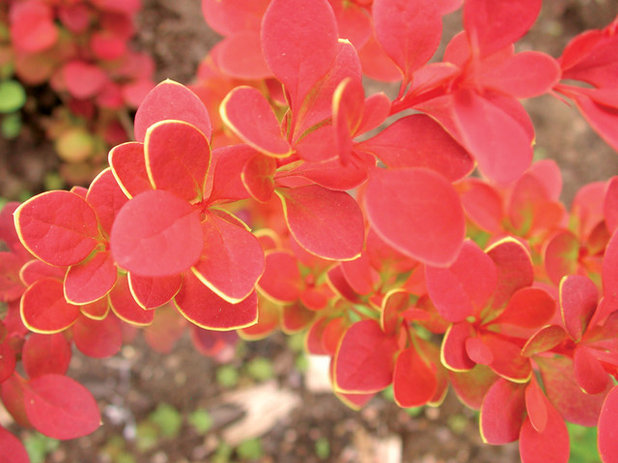
Proven Winners
Sunjoy Tangelo Barberry(
Berberis thunbergii ‘Sunjoy Tangelo’)
I am fortunate that barberries are not invasive in the Seattle area, and even more so that the deer ignore them. For those two reasons, I am especially excited by this new hybrid with its exotic color.
Note: Check with your local cooperative extension or county extension office before planting to see if barberry is considered invasive where you live.
Where it will grow: Hardy to -30 degrees Fahrenheit (zones 4 to 8)
Water requirement: Average to low; drought tolerant once established
Light requirement: Full sun
Mature size: 3 to 4 feet tall and wide
Benefits and tolerances: Deer resistant; low maintenance
Seasonal interest: Spring to fall
When to plant: Spring or fall
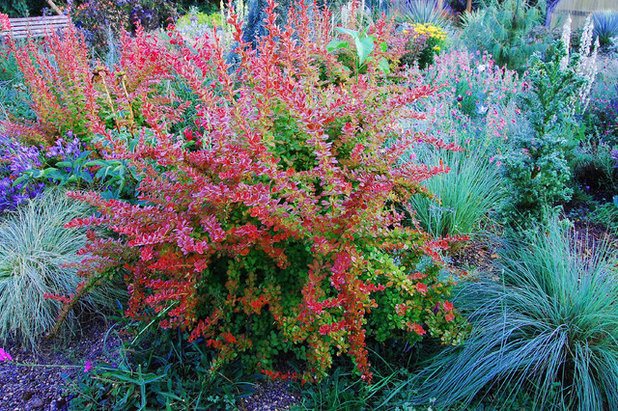
Proven Winners
Distinguishing traits:- Rich orange foliage with a distinct chartreuse margin
- Fiery fall color
- Disease resistant
Planting notes:- It has a loose mounding shape, so grow it in the middle or toward the back of a border.
- Combine it with other foliage and flowers in shades of lime and purple for an eye-catching display.
- Plant it in well-drained soil.
- Prune it for size in early spring if desired.
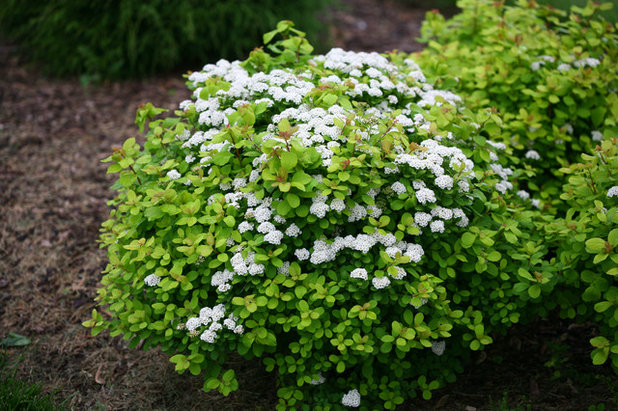 Glow Girl Birchleaf Spirea
Glow Girl Birchleaf Spirea(
Spiraea ‘Tor Gold’)
I have become increasingly enamored of spirea as new foliage colors have been introduced and a greater range of sizes have become available, and Glow Girl offers everything I could wish for.
The emerging leaves are tinged with copper before opening fully to a bold lime green. As the summer progresses, this becomes a soft gold, which transitions in fall to rich rose. The white flowers in spring are a bonus.
Where it will grow: Hardy to -40 degrees Fahrenheit (zones 3 to 9)
Water requirement: Average to low but very adaptable
Light requirement: Full sun or partial shade
Mature size: 3 to 4 feet tall and wide
Benefits and tolerances: A favorite with hummingbirds and butterflies but generally ignored by deer, although they may nibble the flowers; I actually don’t mind this too much, as the shrub continues to produce coppery new foliage.
Seasonal interest: Spring to fall
When to plant: Spring or fall
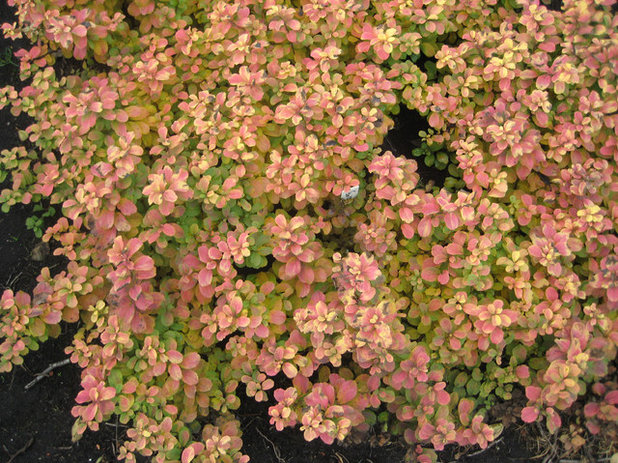 Distinguishing traits:
Distinguishing traits:- Beautiful foliage that changes color from spring to fall
- White flowers in spring
- Does not burn in full sun
- Very cold hardy
Planting notes. Although pruning is not necessary, it may be trimmed for size and shape immediately after blooming.
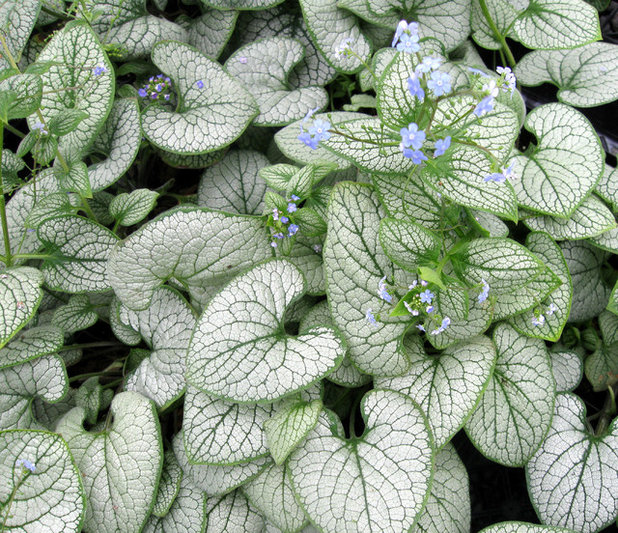
Skagit Gardens
Silver Heart Siberian Bugloss(
Brunnera macrophylla ‘Silver Heart’)
I have always loved this shade-loving perennial for its forget-me-not-type flowers, which dance above the emerging leaves in spring. When the new foliage colors were introduced, I fell in love with this plant all over again. Siberian bugloss is one of the first perennials to leaf out in spring and one of the last to become dormant in fall. The large, heart-shaped leaves quickly form a large mound, rivaling hostas for creating bold impact.
At first glance Silver Heart appears very similar to Jack Frost, which has been around for some time, but the discerning gardener will appreciate that this one has much more silver in its variegation. In my trials last year, I also found it to be far more sun tolerant than Jack Frost and extremely drought tolerant (I forgot to water it for several months), making this is a tough perennial for tough places.
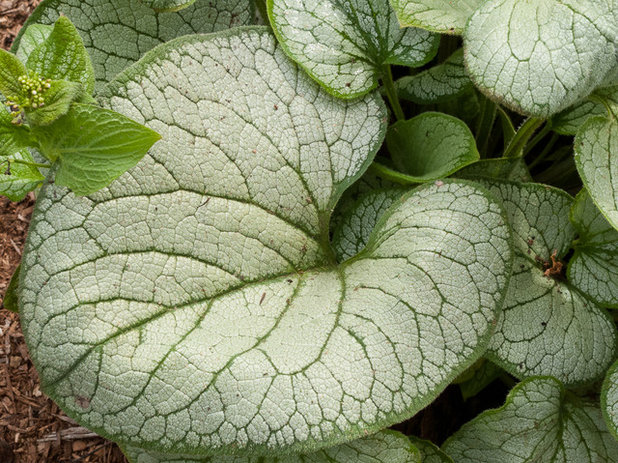
Le jardinet
Where it will grow: Hardy to -30 degrees Fahrenheit (zones 4 to 8)
Water requirement: Average to low; drought tolerant once established
Light requirement: The growers recommend shade or partial shade, but my plant grew well in full sun (Seattle-type full sun) from sunrise until 3 p.m. each day.
Mature size: 1 foot tall and 2 feet wide
Benefits and tolerances: Deer resistant; low maintenance
Seasonal interest: Spring to fall
When to plant: Spring or fall
Distinguishing traits:- More resistant to sun scorch than other varieties
- Blue flowers in spring
- Stands up to heat and humidity
Planting notes:- It’s perfect for woodland gardens and shade containers.
- Plant it in rich, fertile soil that drains well.
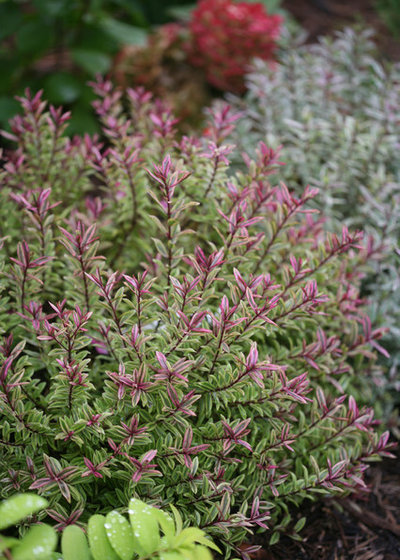 Wild Romance Hebe
Wild Romance Hebe(
Hebe ‘Wild Romance’)
With bright green variegated foliage that turns to rich shades of burgundy in late summer, this is a colorful addition to any sunny, well-drained spot in the garden. Purple summer flowers are a bonus.
Where it will grow: Hardy to 10 degrees Fahrenheit (zones 8 to 10) but can be enjoyed as an annual in colder climates
Water requirement: Average to low
Light requirement: Full sun
Mature size: 24 to 30 inches tall and wide
Benefits and tolerances: Deer resistant; low maintenance
Seasonal interest: Year-round in milder climates
When to plant: Spring or fall
Distinguishing traits:- Variegated foliage
- Summer flowers
- Evergreen
Planting notes:- No pruning is necessary, but it may be trimmed after flowering if desired.
- Feed it a balanced fertilizer in spring.
- Plant it in well-drained soil and provide good air circulation.





